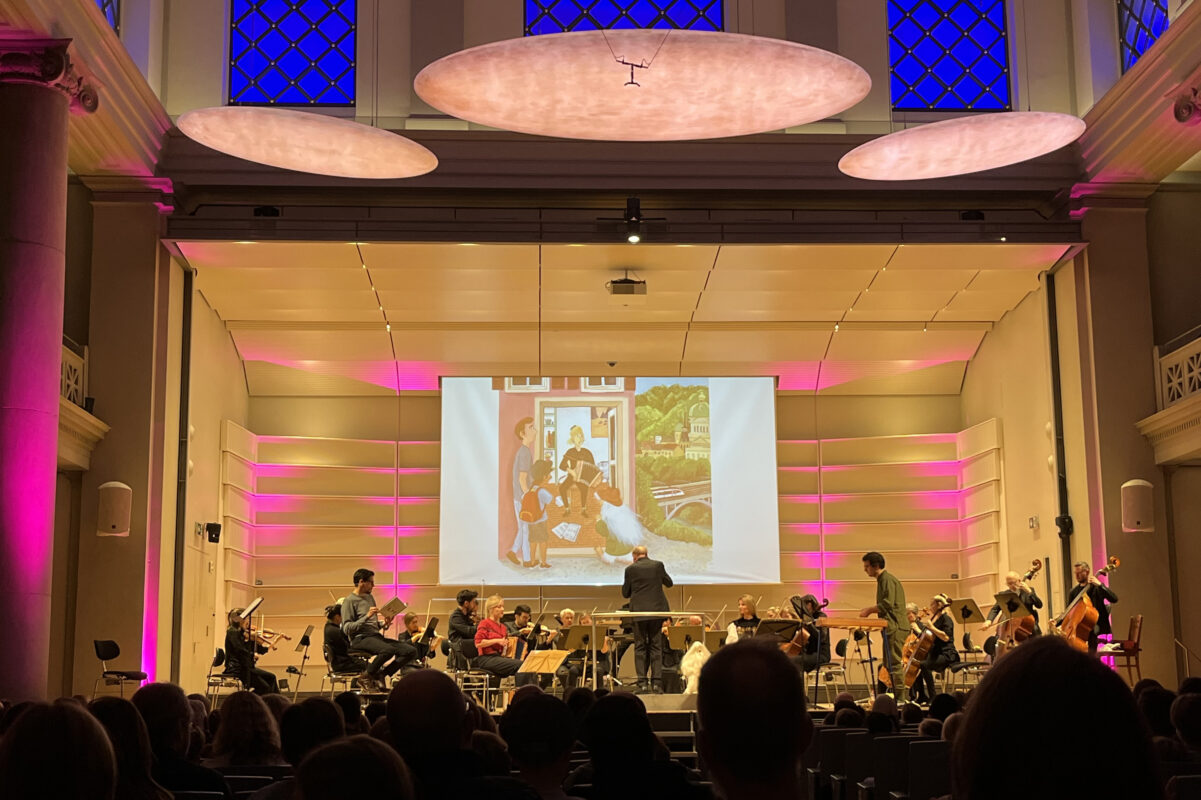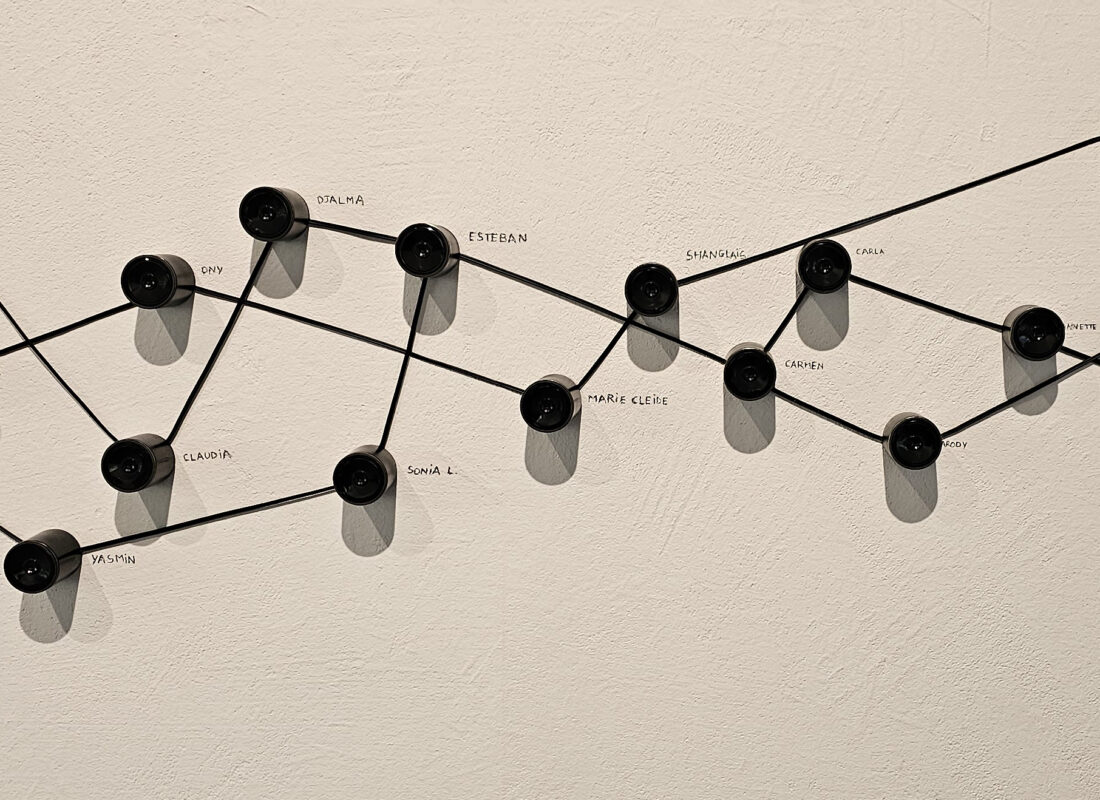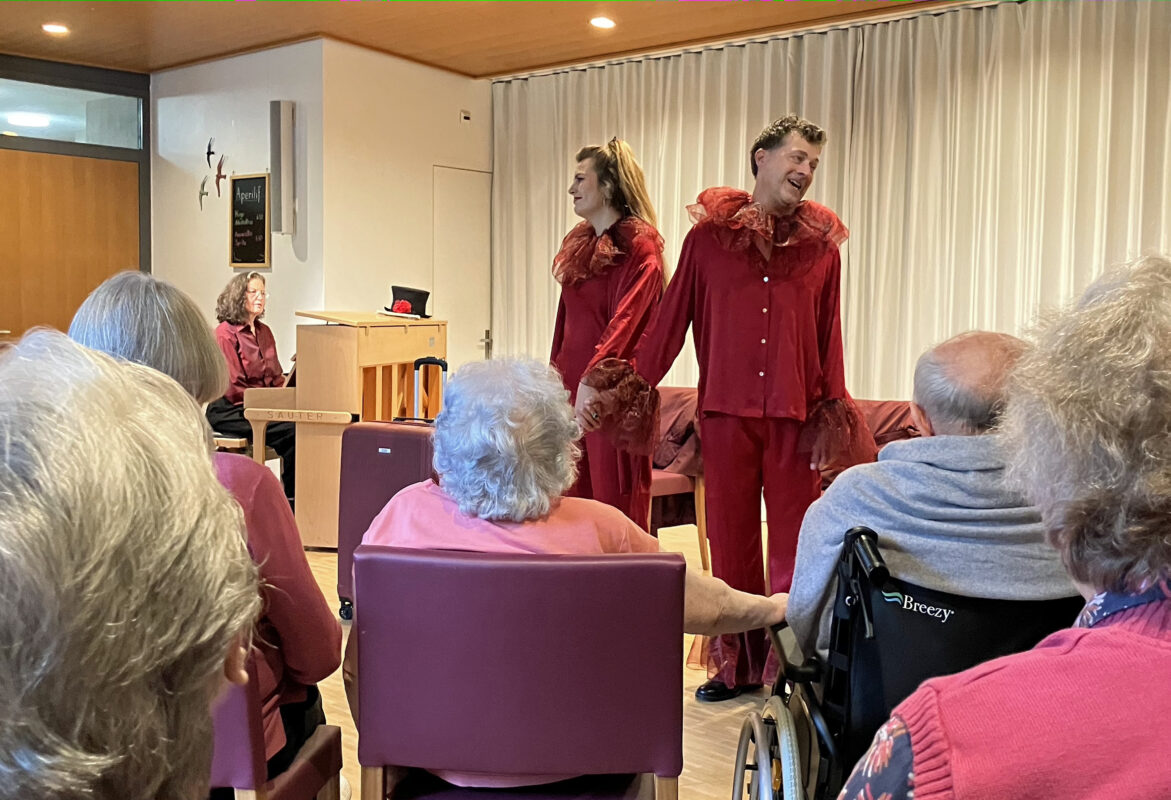The white tower above Mulegns
It has permanently changed the cultural landscape of Graubünden. Now the Origen Festival is celebrating its 20th birthday - with a spectacular building.
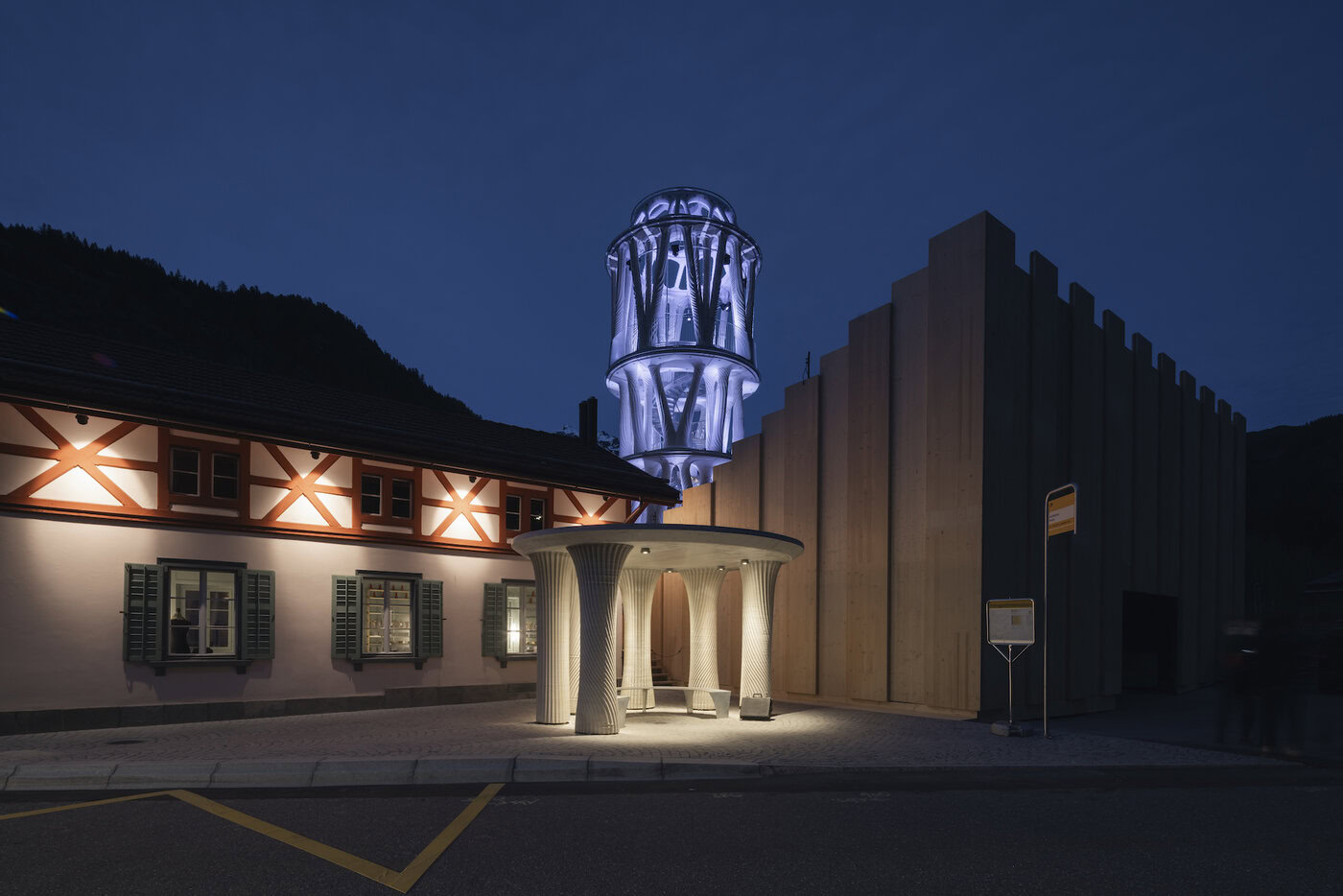
The white tower rises above the village of Mulegns with its small population: the latest 3D technology in the middle of a narrow mountain valley, reminiscent of old Graubünden tradition, namely in the style of a confectioner. Innovation and the past in one, creating a sense of identity - and also completely different from what is otherwise popular in the culture and music scene. The Tor alva, inaugurated on the 20th anniversary of the Origen Festival, is a powerful symbol.
The beginnings of this festival have almost been forgotten, but they were also spectacular. Giovanni Netzer, initiator and spiritus rector of Origen to this day, made the old castle in the village of Riom, high at the entrance to the Surses, suitable for the stage. There he staged musical theater plays that were often inspired by biblical themes, but rethought and satirized them with a commedia troupe that roamed the countryside. It was not the urban, often hyperactive theater of the big city stages, but a restrained, sometimes almost static, at first somewhat old-fashioned representation, characterized by the ambience of the performance venues.
The stories of the returnees
Netzer relied on such peculiarities. Firstly, in terms of personnel: an artistic family soon developed around him, for example with managing director Philipp Bühler, who has been working behind the scenes for years, with conductor Clau Scherrer, who has left his musical mark on many performances thanks to his vocal ensemble, and finally with the colorful, golden and flowery costumes and textile outfits: Martin Leuthold, fabric designer and former art director of the Schläpfer company in St. Gallen, designs them; they are tailored and finished in Lucia Netzer's studio in Riom.
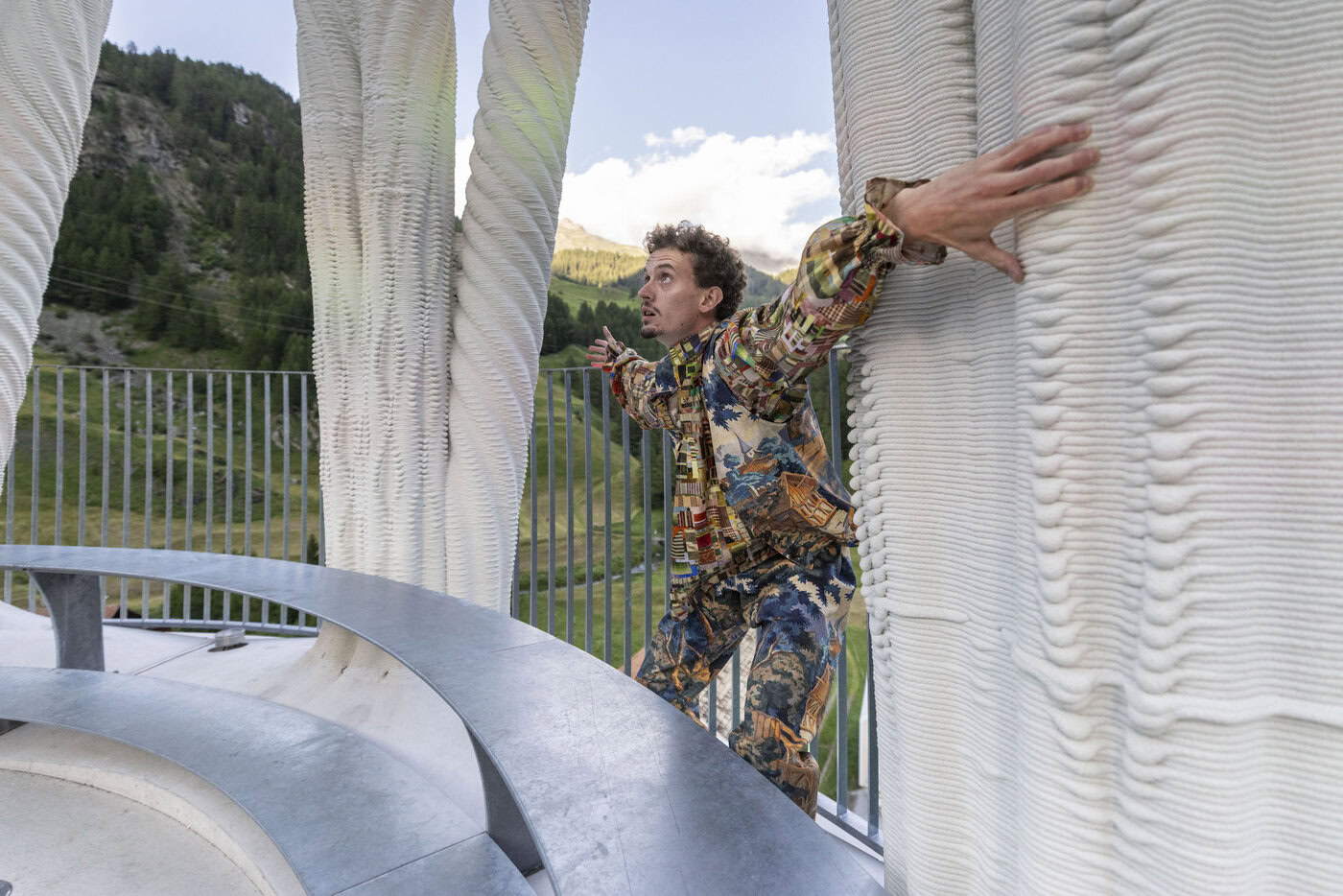
On the other hand, Origen focused on the special features of the valley and the region: the existing monuments, the old churches, houses and hotels, the landscape, the personalities who lived here or passed by, and finally the history of Graubünden. Gradually, the subject matter shifted towards the regional. One subject in particular took center stage: the people of Graubünden who had emigrated since the 15th century to seek their fortune abroad. They were particularly successful all over the world as confectioners. Having become rich, a few returned home and had villas built for themselves. Giovanni Netzer, who grew up in Savognin and returned home after his studies, brings these stories to life, telling them in ever new ways, not only in theater and dance pieces, but also in the buildings.
The region keeps its face
Architecture has long played a central role at Origen. After the old castle, the villa of the successful Parisian confectioner Carisch was also restored in Riom, and the adjacent barn, the Clavadeira, was converted into a theater hall suitable for winter use. Temporary theater housings were built on Lake Silvaplana and on the Marmorera dam wall, as well as on the Julier Pass, where the spectacular red tower was later built, which was used for six years. It became a landmark of the region.
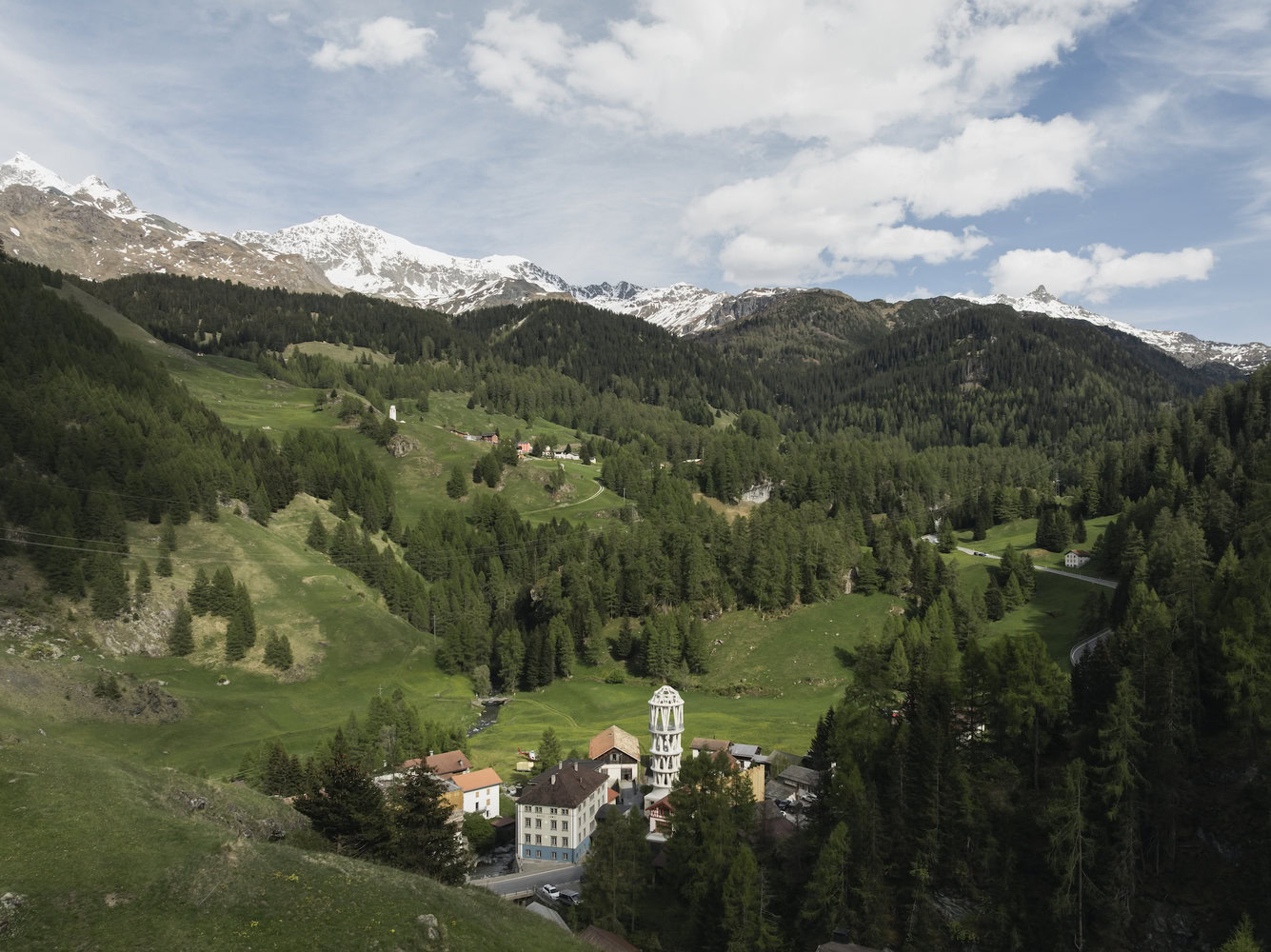
Finally - as Swiss television reported in detail - the white villa in Mulegns was moved eight meters: Old building fabric was thus preserved, but the heavy transit traffic over the Julier can now pass through without any problems. The Hotel Löwe next door, which was built in the 1830s and once hosted royalty, Nobel Prize winners and writers, has also been renovated. The Origen Festival has thus become a role model for many in the use of regional resources.
The confectioner's tower from the printer
Some people will have thought that enough was enough and that Origen had probably reached its peak. But the festival has since surprised everyone with another coup: together with the ETH, it announced the construction of a thirty-metre-high white tower, which was injected piece by piece in a 3D printer as if using a spray bag and then assembled on site. It was officially inaugurated in May, currently the world's tallest 3D building. A masterstroke indeed, also aesthetically. After all, where else can you find a confectionery tower like this, where you can literally see the whipped cream oozing out between the layers? Like all patisserie, some people will probably suspect it of being kitsch, but the tower is absolutely harmonious in this historic landscape. (Don't some of Gaudí's buildings also have something sweet about them?) Anyone who climbs to the top not only experiences a wonderful view, but also feels the unique materiality of the building. Fairytale-like - and courageous at the same time. It is to remain there for five years.
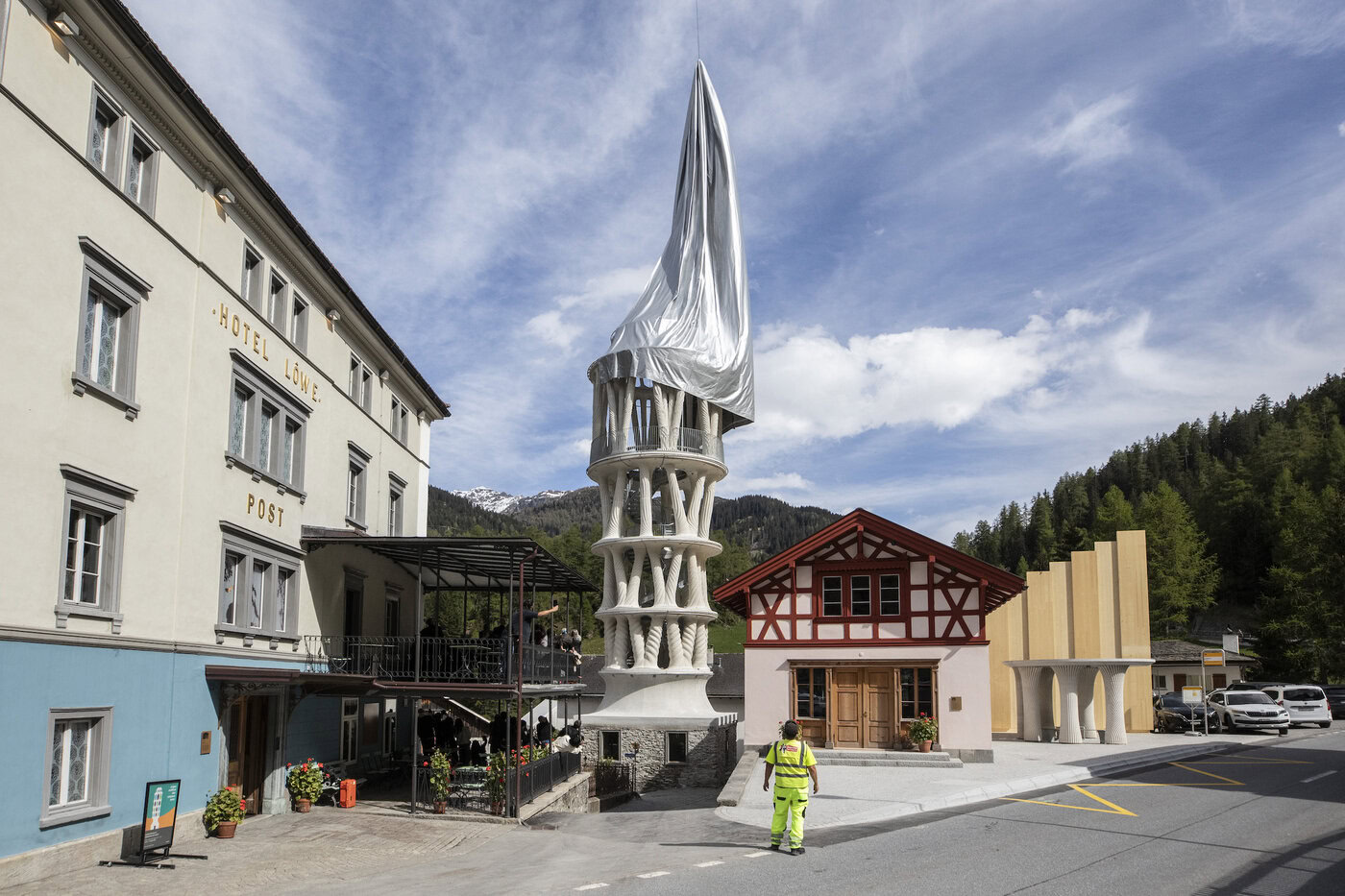
"Fairy tales" is also Origen's motto this year. In front of the tower is the dance piece La Torre in which Netzer presents Calderón's classic Life is a dream into a family of confectioners. At dusk, the tower not only forms a magnificent backdrop, but is also incorporated into the scenery. In the old dining room of the Hotel Löwe, an idiosyncratic version of the Magic flute to experience. In addition, there are several high-quality ballet choreographies, exhibitions, guided tours, Gregorian chants in the morning or at Compline in ancient churches and, of course, the Commedia troupe, which tells the story of a mountain farmer's child: It wanders through the world until it is gripped by homesickness. Origen remains true to itself here too. We can't wait to see what surprises it comes up with next.






